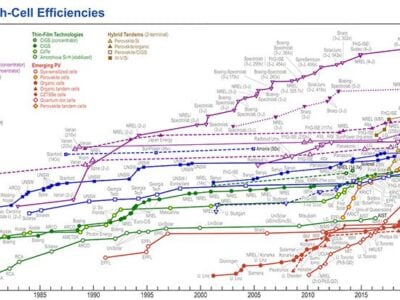
Infrastructure now key to the future of the connected mobile health platform
One of the most compelling reasons for the use of the mobile phone as a health/fitness hub is its connectivity to the wider world. By interacting with a dieting website, jogging program or your local health authority, your phone and connected accessories can deliver and record comprehensive fitness training, weight training and disease management programmes, and more.

Put very crudely, although it is currently being used in certain health and wellbeing applications, ‘Classic’ Bluetooth’s power draw is deemed too high for many health and wellbeing devices. And while proprietary technologies may perform adequately as a short-term low-energy ‘stopgap’ measure, a proprietary protocol means consumers cannot enjoy the wide-ranging cross-compatibility that comes with Bluetooth, but instead must sign into a very limited ecosphere of licensed device suppliers.
Bluetooth low energy promises to combine reliable, standardised cross-compatibility with wireless devices that can last for years on a single button battery. And Bluetooth low energy has Bluetooth’s enormous install base to ride on, meaning that it is assured of fast, widespread penetration of the market. With the technology on the way, however, the industry now needs to concentrate on getting the infrastructure in place to support it.
Possibilities…
The primary benefit of ‘fitness’ and ‘wellness’ applications, for example, are to allow the consumer to have fun and stay fit. These might include pedometers or heart rate monitors. While the needs of these applications are specific, you could argue they are reasonably ‘casual’. These consumer applications of Bluetooth low energy will be the first that are deployed in the market.
The needs of these are very different to, for example, assisted living applications, which might include in-house motion detectors or alarm fobs, or disease management and connected health applications, which might include glucose meters, blood pressure monitors or other, more specialised medical equipment.
When any wireless technology is applied to a medical device it falls under the regulatory development requirements of the market into which it is sold. These regulatory requirements look at the risks of the system and mitigating actions that must be taken to ensure patient safety. Managing the risks associated with a user selected mobile handset presents a significant challenge for the designer, and therefore raises obvious concerns.
Getting there
It’s been a while in coming, but over the last year or so several Bluetooth low energy products have been launched, including some by CSR. We’re now on the home stretch, and are entering the phase where the final touches are being applied to standards, qualification, and the vital supporting infrastructure required to deliver the full promise of this technology in health and fitness.
The principle role in defining the various application profiles of Bluetooth low energy over the last few years has been fulfilled by the Bluetooth Special Interests Group (The Bluetooth SIG). This general body has been responsible over the years for defining and standardizing Bluetooth overall, and is populated by a cross-section of companies.
This body ratified Bluetooth low energy in December 2009 as part of the Bluetooth v4.0 standard. Bluetooth v4.0 outlines the core functionality of Bluetooth low energy and SIG members have been working to build on this to provide compatible profiles for health and fitness products. The first of these profiles will be launched in the coming months.
In co-operation with The Bluetooth SIG, a body known as The Continua Health Alliance, a non-profit alliance of over two hundred and thirty companies founded in 2006, including CSR, Nokia, Intel, Samsung, Novartis and GE Healthcare, amongst many others, has applied specialist medical and technology expertise to select the technologies that are most suitable to the health applications they support.
The output of the process is a set of guidelines, and a certification process that ensure the selected technologies are applied in a way that enables end-to-end connectivity for medical devices. The current Continua guidelines enable developers to deploy Bluetooth enabled health sensors, and the first Continua Certified mobile handsets have been launched by NTTDocomo with Fujitsu. The next generation of the Continua Health Alliance 2011 guidelines launching later this year will enable the deployment of Bluetooth low energy Health products.
The industry needs to see sufficient rollout of dual-mode silicon in handsets, or a confident prediction that this will happen, in order for manufacturers to have a basis for the large-scale production of single-mode Bluetooth low energy devices. At the same time, we need to see the availability of cost-effective, low power, single-mode silicon to enable accessory manufacturers. However silicon is only part of the infrastructure story. The industry also requires dual-mode software stacks with simple APIs in order to enable application developers to exploit this exciting new technology.
On all of these fronts progress is already being made. CSR is leading among the many silicon vendors who are now committing to support Bluetooth v4.0 in this generation of silicon meaning that a wide range of new device launches will include dual-mode Bluetooth silicon this year. We can expect that any device that would previously have included ‘Classic’ Bluetooth functionality will now include Bluetooth low energy, and that’s a lot of devices. Single mode Bluetooth low energy silicon is also now available for example with CSR’s µEnergy devices.
And, of course, the last step in the chain of preparing the health and fitness market for this technology will be consumer education. Companies and the SIG together need to ensure that consumers understand what this technology is, and which accessories will work with their Bluetooth low energy-enabled handsets.

Bluetooth low energy stands to be the biggest PAN wireless revolution since Bluetooth, delivering innumerable benefits to the consumer, as well as profit to the health, fitness and wellbeing industries. We’re now entering the final stages. Like all the best technologies, including Bluetooth before it, Bluetooth low energy in health and fitness will soon become something everybody is used to using without even thinking about it.
Paul Williamson is product marketing manager at CSR
Related news:
Bluetooth in 467 million health devices by 2016
CSR : ULP Bluetooth uses 10 times less power
 If you enjoyed this article, you will like the following ones: don't miss them by subscribing to :
eeNews on Google News
If you enjoyed this article, you will like the following ones: don't miss them by subscribing to :
eeNews on Google News



